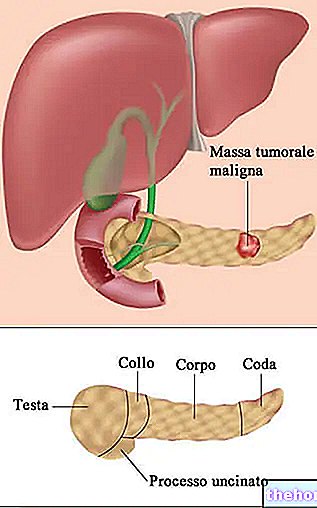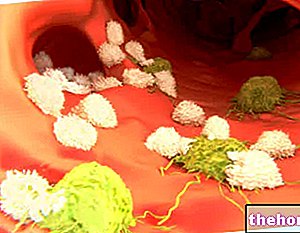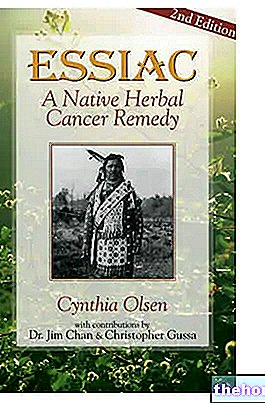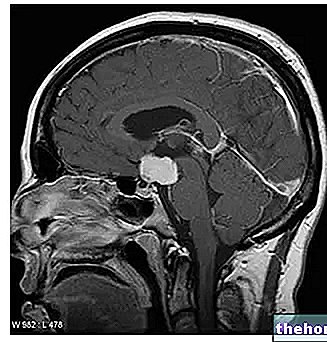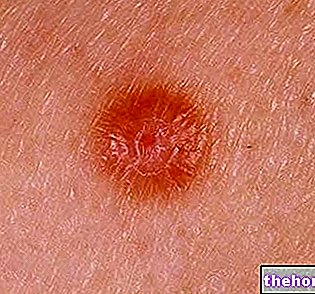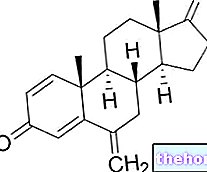Preventing esophageal cancer essentially means minimizing the risks associated with the variables on which it is possible to intervene; it is therefore a question of acting above all on lifestyle and nutrition.
Tumor of the esophagus
Cancer of the esophagus mainly affects men, it is a scarcely widespread carcinoma in Italy (0.8-4.9 cases per 100,000 inhabitants with prevalence in Friuli-Venezia-Giulia) but burdened by a very high mortality rate.

The typical symptoms of esophageal cancer is linked to difficulty in swallowing, or dysphagia; this is almost always progressive and accompanied by weight loss (due to difficulty in eating), pain or a sense of oppression in the retrosternal area. And, only in a second. moment, it is associated with other symptoms related to metastases.
The diagnosis of esophageal cancer is quite simple; endoscopy, X-ray, CT, MRI and other latest generation techniques are used but, as anticipated, the big problem of this pathology remains the lack of early diagnosis; in this regard it would be appropriate that, especially in the areas most at risk, in males, in subjects with familiarity for esophageal cancer and in those characterized by familiarity for other related pathologies, diagnostic screening procedures were adopted to facilitate the recognition and possibly to prepare a therapeutic intervention d "urgency.
Risk factors
Although the percentages of importance of the various risk factors are not well defined, it is however well known that lifestyle and diet have a significant impact on the pathogenesis of esophageal cancer.
The most relevant components are certainly smoking and alcoholism (even worse if combined) and a diet rich in nitrosamines but poor in retinol, magnesium and iron.
At the same time, it has been found that some diseases or disorders of the esophagus are frequently accompanied by an increase in the incidence of cancer; this is the case of tylosis, achalasia (hypermotility disease of the esophagus), viral and bacterial infections, polyps, diverticula, inflammatory strictures, Barrett's esophagus (especially if NOT treated) and esophageal scars ( eg from swallowing caustic agents) Another risk factor can be considered to be male.
Preventing esophageal cancer with proper nutrition and lifestyle
In order to effectively prevent the onset of cancer in the esophagus, it is essential:
- Reduce all risk factors
- Use mass screening and, if necessary, keep the individual control rate active
The reduction of risk factors obviously refers to the correction of diet and lifestyle, as well as the treatment of related diseases; since it is not possible to intervene on the inheritance of comorbidities, on sex and on ethnicity, it is advisable that everyone we try to carefully follow the following guidelines useful for the prevention of esophageal cancer:
- Eliminate smoking, especially if accompanied by alcohol abuse; cigarette smoke, but also cigar and pipe smoke, favors the accumulation of polycyclic aromatic hydrocarbons such as highly toxic and potentially carcinogenic molecules.
- Eliminate alcoholism, especially if accompanied by smoking; alcohol is a pro-oxidant and toxic molecule in all body tissues (including the mucous membrane of the esophagus)
- Minimize foods containing nitrates and nitrites in order to limit the formation of nitrosamines; these are molecules used as fertilizers (therefore they represent pollutants of the aquifers) and / or as food additives which, reacting with nitrogen compounds (thanks to bacteria), are transformed into nitrosamines; nitrosamines are highly carcinogenic compounds for the esophagus but also for the stomach, intestines, liver and pancreas.
- Favor a diet rich in antioxidants (especially retinol - vitamin A) and do not neglect the intake of iron and magnesium.
- Treat the pathologies of the esophagus in the best possible way; some disorders such as achalasia, Barrett's esophagus induced by gastroesophageal reflux disease (GERD), inflammatory strictures, diverticula, polyps etc. can be improved with the intervention pharmacological, endoscopic, dietary and possibly surgical.
- Take care of the hygienic aspect, prevent the pathogenic contagion and avoid home accidents; the HPV or papilloma virus and the Helicobacter pilory are two pathogens strongly correlated to transforming-mutogenic infections. Coexistence with subjects carriers of these infections must include: 1. The therapeutic process useful for treatment 2. Behaviors hygienically suitable for reducing the possibility of contagion.
Less direct but still important is the control of household accidents towards children who, in case of incorrect storage of caustic products, could mistakenly ingest them; in case of voluntary ingestion due to attempted suicide, periodic monitoring of the esophageal integrity will be necessary.
Preventing esophageal cancer is possible but, as with most cancers, it requires a real awareness of potentially at risk subjects and a consequent commitment to changing lifestyles, nutrition and periodic and systematic endoscopic monitoring. .

